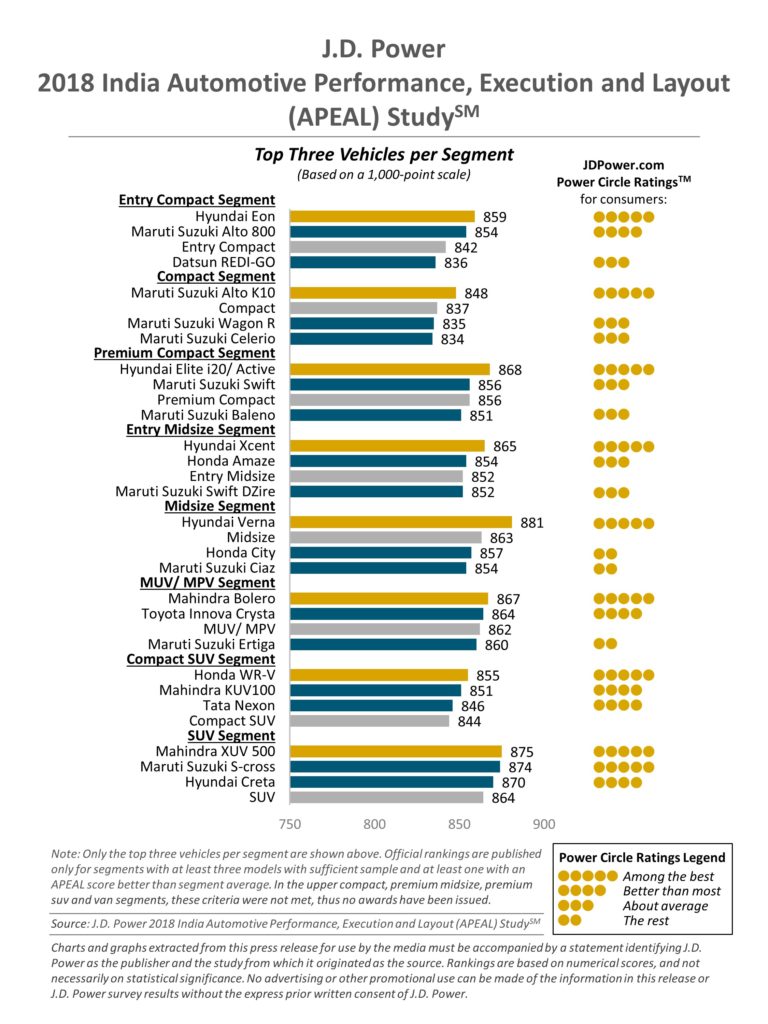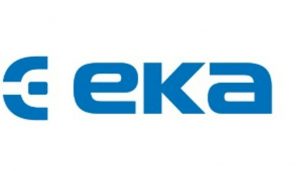Feeling Safe When Driving Grows in Appeal Among New Vehicle Owners in India, J.D. Power Finds

SINGAPORE: EMBARGOED FOR RELEASE UNTIL 27 FEBRUARY — Feeling safe while driving increases a vehicle’s appeal considerably among new owners in India, placing high importance on the aspects that affect their safety while driving, according to the J.D. Power 2018 India Automotive Performance, Execution and Layout (APEAL) StudySM, released today.
The study finds that key elements of a vehicle’s systems that contribute to vehicle safety, such as feeling safe while driving, brake responsiveness, front and rear visibility and visibility while changing lanes, contribute to a combined importance of 9% towards the overall satisfaction an owner feels with their vehicle. At an overall level, safety-related aspects are the second-highest contributor to satisfaction, after fuel efficiency-related elements.
“The study finds that a well-designed vehicle with all-round visibility are cited as the top two most appealing parameters for new vehicle owners,” said Kaustav Roy, Director and Country Head – India at J.D. Power. “With the enhanced focus on safety and crash precautionary features soon to be introduced in the market, manufacturers who align their vehicle design with this new trend and ensure that their customers feel as safe as possible when driving their vehicle are more likely to appeal to customers and increase overall satisfaction.”
Following are some of the key findings of the 2018 study:
- Fuel economy underperforms across all segments: Although fuel economy is the most weighted parameter of the study, in terms of a vehicle’s fuel economy and the driving range between each refueling, there is a mismatch between the expected fuel economy (19.5 Km/Liter) and actual fuel economy (16.2 Km/Liter) which contributes to a lower APEAL score.
- HVAC-effectiveness and quietness of operation appeal to new car owners: The ability of the heating, ventilation and air conditioning (HVAC) system to quickly cool down, along with the quietness of the system’s operation are cited as the most appealing factors for new vehicle owners.
- Storage and space design on the right track: Two-fifths of owners tend to use their front cup holders frequently. These customers rate the usefulness of both central control storage and cup holders high, indicating that the current design of these spaces meet their daily requirements.
- Strong correlation between APEAL score and recommendation and repurchase intentions of vehicle owner: Among owners of vehicles with average or above average APEAL scores (850 or higher, on a 1,000-point scale), 87% say they “definitely will” recommend their purchased model and 77% “definitely will” repurchase the same make. In contrast, among owners of vehicles with below-average APEAL scores (791 or lower), 52% say they “definitely will” recommend their vehicle model and 44% “definitely will” repurchase the same brand.
Study Rankings
- Hyundai Eon ranks highest in the entry compact segment with a score of 859.
- Maruti Suzuki Alto K10 ranks highest in the compact segment with a score of 848.
- Hyundai Elite i20/ Active ranks highest in the premium compact segment with a score of 868.
- Hyundai Xcent ranks highest in the entry midsize segment with a score of 865.
- Hyundai Verna ranks highest in the midsize segment with a score of 881.
- Mahindra Bolero ranks highest in the MUV/ MPV segment with a score of 867.
- Honda WR-V ranks highest in the compact SUV segment with a score of 855.
- Mahindra XUV 500 ranks highest in the SUV segment with a score of 875.
The 2018 India Automotive Performance, Execution and Layout (APEAL) Study is based on responses from 7,572 new-vehicle owners who purchased their vehicle from December 2017 through October 2018. The study includes 75 models from 13 makes.
The study measures what factors satisfy owners in India regarding their new vehicle’s performance and design during the first two to six months of ownership. The study examines 79 attributes in 10 vehicle categories: exterior; interior; storage and space; audio/ communication/ entertainment/ navigation; seats; heating, ventilation and air conditioning; driving dynamics; engine/ transmission; visibility and driving safety; and fuel economy.
The study now also includes the Net Promoter Score® (NPS),[1] which measures new vehicle owners’ likelihood to recommend their vehicle brand on a 0-10 point-scale.







